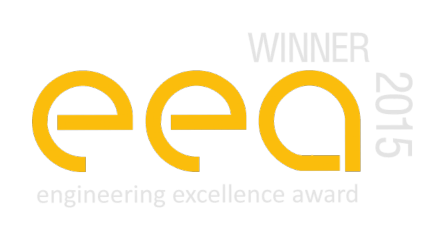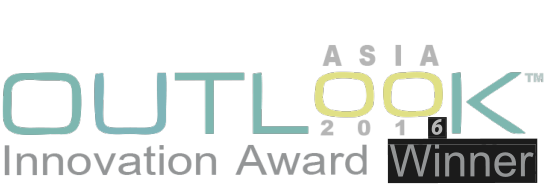








Incumbent air assisted recycling technology cuts the diaper into small pieces, either by buster fan or shredder. It is this cutting process that creates small plastic pieces that later travel through the holes in the sieve. This failure mode causes the pulp stream to be contaminated with small plastic pieces. In the past, this failure mode was not so critical as most back sheets were white. However, with more and more printed back sheets have compounded this problem making the small plastic pieces easy to see for the customer and causing customer complaints.
Our new breakthrough recycling process does not cut the diaper which prevents small plastic pieces from occurring. Solving the root cause of this process issue provides unparalleled pulp purity. For customers selling their reclaim pulp, this results in a higher selling process. For customers re-feeding the pulp back into their core-former, pulp can be re-fed risk free without creating any consumer noticeable defects.
Incumbent air assisted recycling technology processes the diaper plastic chassis up to 4 times using buster fans. Processing the plastic 4 times does not provide enough processing cycles to remove the pulp from the plastic. Plastic streams emerging from the process have a heavy pulp and SAP contamination. The non-pure plastic stream is typically sold for a very low value or sent to landfill.
Our new breakthrough recycling technology processes the plastic over 400 times. This achieves a plastic stream of such purity that the plastic can be converted into pellets. These pellets typically can be sold for between 40 – 68 cents per KG, dependent on location.
Incumbent recycling solutions have significant amounts of fine SAP dust. This dust causes a loss in performance of the SAP resulting in reduced product performance.
Our new breakthrough recycling process cleans the SAP through 6 separate cleaning cycles. The process has been specifically designed not to damage the SAP thereby eliminating the risk of creating further dust.
Incumbent air assisted recycling technology requires significant energy to operate. Most systems require between 200 – 250 KW. At 8 cents per KWH, the annual running cost is a huge 150,000 USD per year.
Our new breakthrough recycling process operates air-free. A typical recycling solution uses just 20 KW of energy. On a 1:1 benchmark test with the same product and same production volume, the new air-less technology requires 1/10th of the energy versus incumbent air assisted recycling solutions.
Incumbent air assisted recycling technology requires significant space in you factory. Most systems require anything from 400 – 600 square meters of space.
Our new breakthrough vertical stacking process technology significantly reduces floor space requirements. Systems start at just 3.5 square meters.
Recycling operations to date have always had some level of contamination risk. If its ear plugs, chewing gum, bromo testing diapers, the risk is always there. In many instances these contamination risks are impossible to stop as the most advanced detection systems have difficulty to detect non metallic objects such as ear plugs and chewing gum.
Our in-line recycling solutions eliminate all contamination risks by fully enclosing the process. It is no longer possible to throw in unwanted objects.
Incumbent air assisted recycling technology processes the diaper plastic chassis up to 4 times using buster fans. Processing the plastic 4 times does not provide enough processing cycles to remove the pulp from the plastic. Plastic streams emerging from the process have a heavy pulp and SAP contamination. The non-pure plastic stream is typically sold for a very low value or sent to landfill.
Our new breakthrough recycling technology processes the plastic over 400 times. This achieves a plastic stream of such purity that the plastic can be converted into pellets. These pellets typically can be sold for between 40 – 68 cents per KG, dependent on location. To increase the saleability of the pellets, additional filtering systems can be added that removed all last traces of contamination ensuing the higher re-sale value possible.
Incumbent air assisted recycling technology use fans to transport the materials. The SAP typically pass through 5 or more fans during the recycling process. The fans are particularly damaging to the SAP, in particular all new cross-linker SAPs have a very delicate outer surface that needs to be protected. A buster fan operating at say 3000 RPM has high speed moving impellers, the tips of the blades reaching 340 KM/Hour, which the SAP is also subjected to a significant G-Force as it moves around the outer fan casing of up to 2500 G.
Our new breakthrough recycling process operates air free.. No fans are used to break up or transport the recycled product. Only a singe pulp fan is used to transport the pulp back to the core-former in installation scenarios that re-use their pulp in-line.
Incumbent air assisted recycling technology requires significant amounts of air to operate . They also require dry air to operate correctly. All air in the recycling production area is sucked out of the room. This air needs to be replaced hence, large HVAC tonnage air-conditioning systems are needed that are expensive to purchase and to operate due to the large ongoing power requirements.
Our new breakthrough recycling process requires no air to operate. As such, the air in the recycling production area is not affected by the recycling process.
Whilst 70% of the diapers today adopt a standard pulp and SAP core, some diaper designs utilize a different core structure. Dry-lock, Pampers, and ElasTec Suisse to name but a few. Whilst the diaper which do not glue in the SAP such as Dry-lock and Elastic Suisse, products which glue in the SAP such as Pampers required a specific processing solution. Products that contain both standard pulp fibers and curly fibers also require a specific processing solution.
Our multi stage recycling technology can be customised according to customer product specification. Additional processing modules can be added to remove specific materials such as curly fiber.
For adequate product tracking and accountability many factories adopt a strict raw material tracking system and the majority also follow GMP practices. Factories operating to such standard do not wish to jeopardize their material tracking and GMP standards and do not wish to mix raw materials across product lines.
Our in-line recycling technology returns the recovered raw materials back to source. All SAP removed from the production converter is sent back to the same production converter in a fully sealed system.
For adequate product tracking and accountability many factories adopt a strict raw material tracking system and the majority also follow GMP practices. Factories operating to such standard do not wish to jeopardize their material tracking and GMP standards and do not wish to mix raw materials across product lines.
Our in-line recycling technology returns the recovered raw materials back to source. All pulp removed from the production converter is sent back to the same production converter in a fully sealed system.








